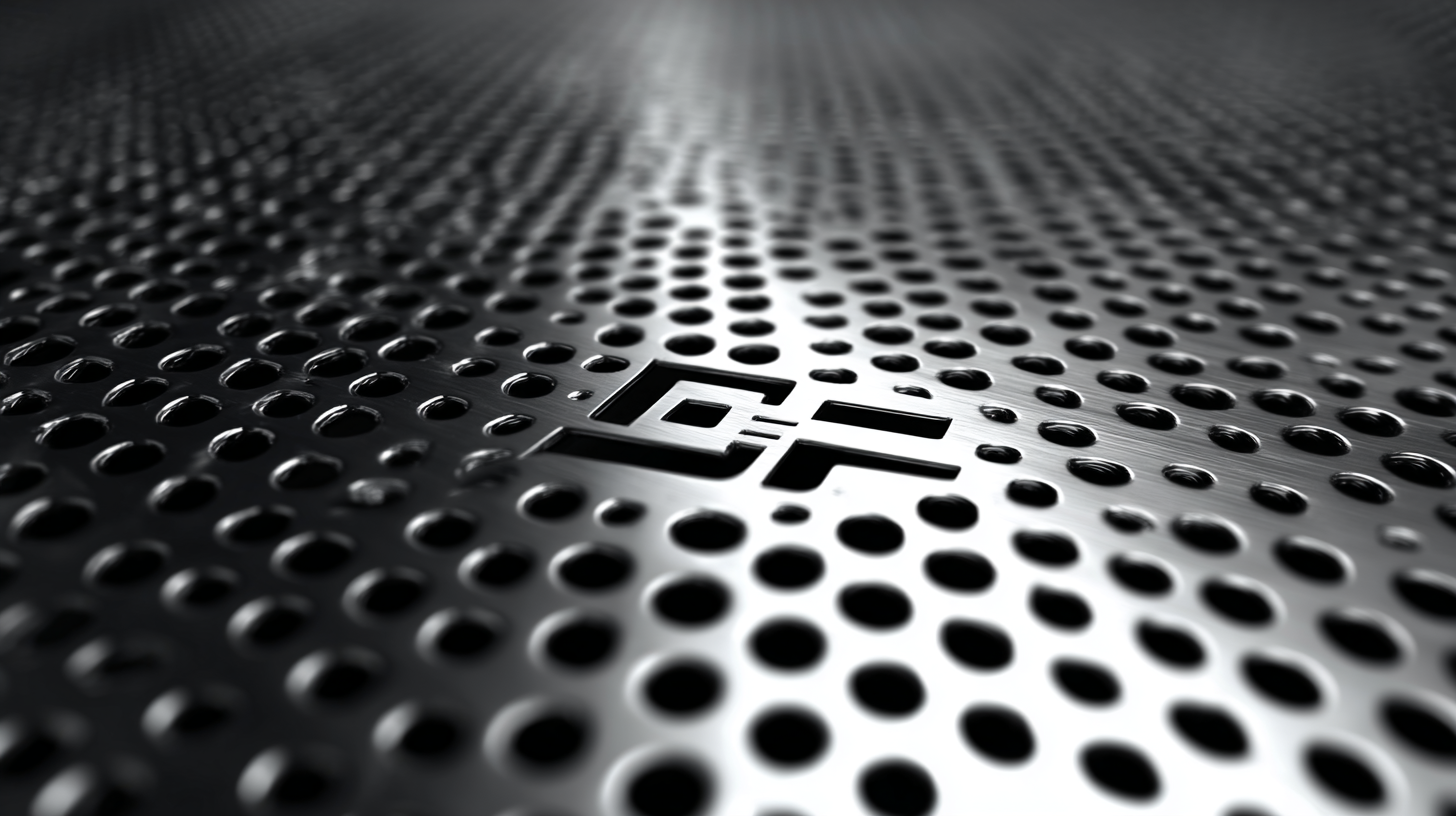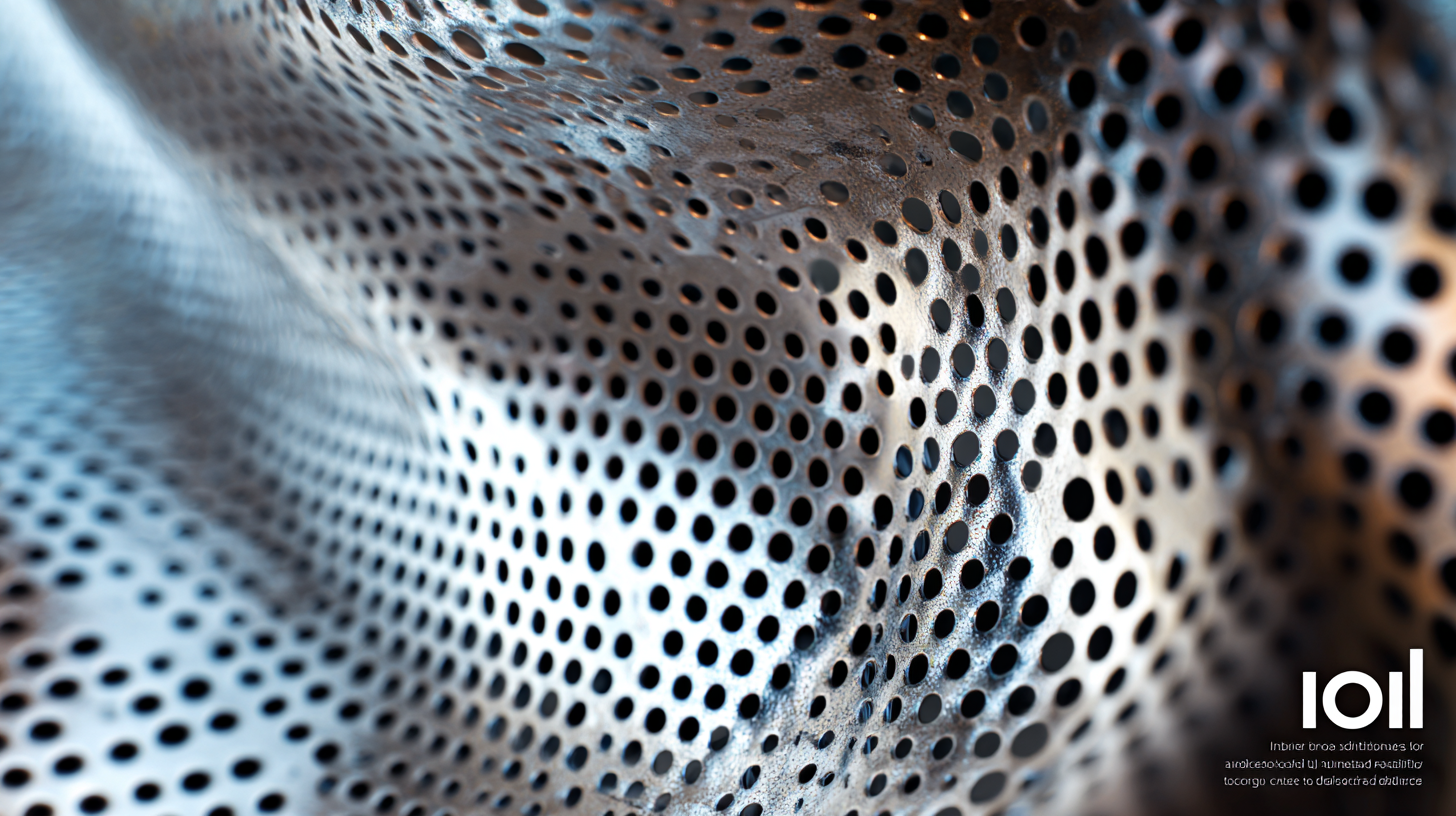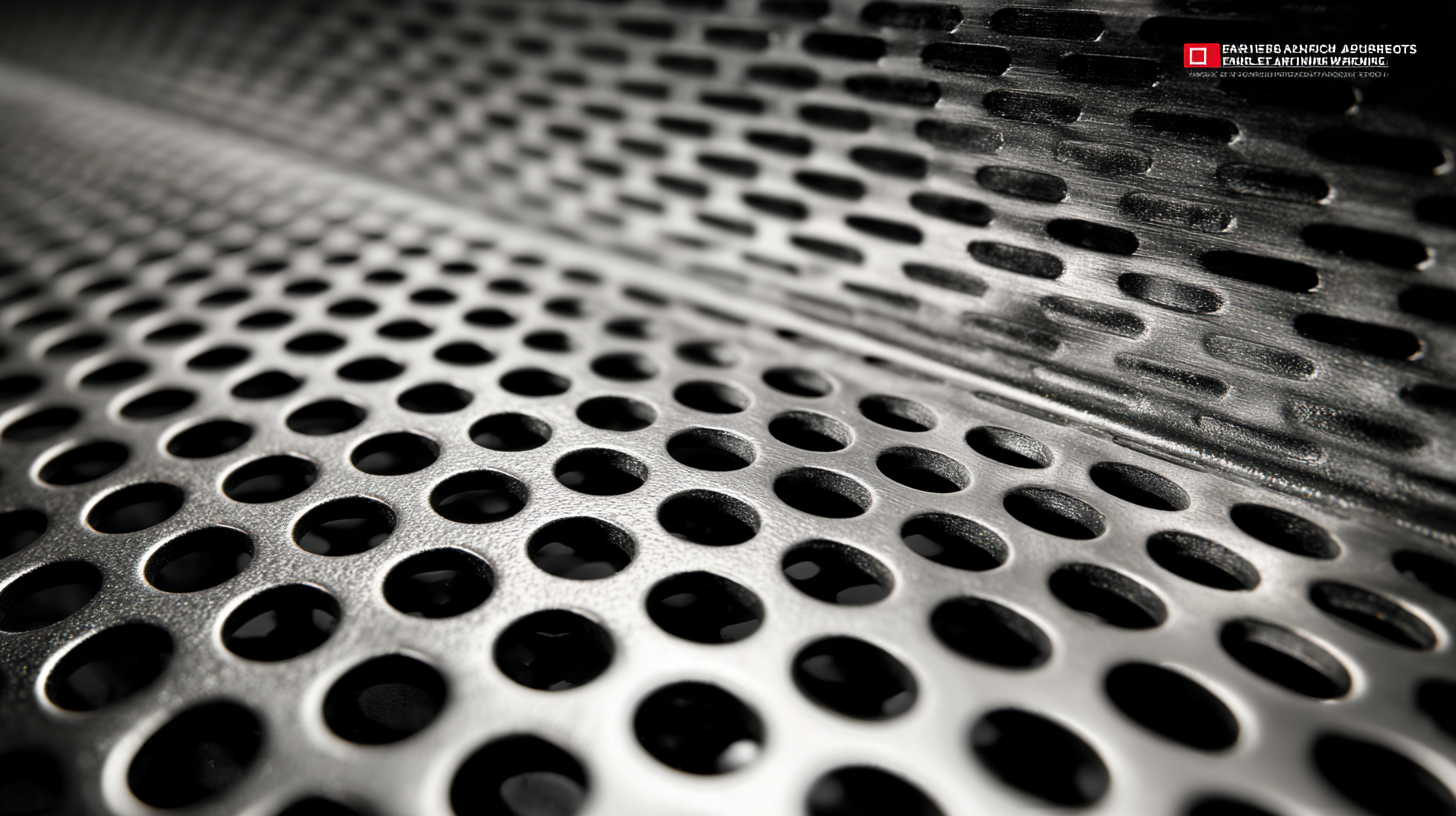The emergence of Decorative Perforated Sheet Metal has transformed various sectors, from architecture to interior design, thanks to its versatile applications and aesthetic appeal. According to a recent industry report by Global Industry Analysts, the global market for perforated metal is projected to reach USD 4.47 billion by 2026, driven by an increasing demand for lightweight materials and sustainable building solutions. This innovative material not only enhances visual aesthetics but also contributes to energy efficiency and acoustic control, making it a preferred choice among architects and designers. As the trend towards customization grows, industries are seeking certification for imports and exports to ensure compliance with international standards, further emphasizing the importance of quality and innovation in this niche market. The future of decorative perforated sheet metal is bright, as advancements in technology pave the way for even more creative and functional applications.

As we approach 2025, the decorative perforated sheet metal industry is on the brink of exciting transformations. One of the emerging trends is the integration of advanced fabrication technologies, such as laser cutting and 3D printing. These innovations enable designers to create intricate patterns and shapes that were previously unimaginable, expanding the creative possibilities for both architectural and interior design applications. The ability to manipulate materials with precision allows for customization that meets the specific aesthetic preferences of consumers, promoting a blend of functionality and artistry.
Another significant trend is the increasing emphasis on sustainability. As eco-consciousness continues to rise among consumers, manufacturers are focusing on sourcing recycled metals and utilizing environmentally friendly processes. Decorative perforated sheets fabricated from sustainable materials not only meet aesthetic demands but also align with the growing demand for green building practices. This shift offers an opportunity for businesses to differentiate themselves in a competitive market, appealing to a clientele that values both beauty and sustainability in their design choices. The intersection of innovative technology and eco-friendliness promises to redefine the landscape of decorative perforated sheet metal in the years to come.

Perforated sheet metal is rapidly becoming a mainstay in contemporary interior design, offering both aesthetic appeal and functional advantages. These sheets, characterized by their unique patterns of holes, not only serve as decorative elements but also enhance acoustics, improve airflow, and allow for natural light diffusion. According to a recent market research report, the global perforated metal market is projected to grow by over 6% annually, highlighting its increasing demand in architecture and design applications.
One innovative application gaining traction is the integration of decorative perforated sheets in spatial dividers and ceiling panels. Designers are leveraging these sheets' versatility to create visually striking environments that maintain privacy while promoting openness. For instance, the use of perforated metal as a feature wall can dramatically alter a room's ambiance without overwhelming the space.
**Tip:** When selecting perforated sheets for your interiors, consider the material and hole pattern, as these can significantly influence both the aesthetic and functional qualities. Additionally, pairing perforated metal with ambient lighting can enhance its visual impact, creating stunning light and shadow effects that transform any environment into a sophisticated setting.
| Application Area | Material Type | Design Benefits | Sustainability Features |
|---|---|---|---|
| Interior Partitions | Aluminum | Elegant aesthetics, light transmission | Recyclable, lightweight |
| Ceiling Tiles | Steel | Acoustic properties, decorative | Durable, minimal waste |
| Wall Panels | Stainless Steel | Modern look, easy maintenance | Long-lasting, corrosion-resistant |
| Lighting Fixtures | Copper | Unique glow, creative designs | Energy-efficient, recyclable |
| Furniture Design | Brass | Stylish, durable finish | Sustainable sourcing |
The demand for eco-friendly materials in design is on the rise, and perforated sheet metal is no exception. Designers are increasingly turning to sustainable sources, ensuring that their creations not only enhance aesthetics but also promote environmental responsibility. By utilizing recycled metals or exploring options like aluminum and stainless steel, projects can achieve a chic look while making a lesser impact on our planet.
Tip: When selecting materials, always look for certifications that confirm the sustainability of your metal choices. This can include sourcing from suppliers that prioritize recycling and reduced carbon footprints. Investing in companies committed to eco-friendly practices can ensure that your projects align with a greener vision.
Incorporating perforated sheet metal into architecture and product design allows for the creation of functional yet stylish elements. These materials can enhance light and air flow while maintaining privacy, showcasing a perfect blend of innovation and elegance.
Tip: Consider incorporating natural finishes or paints derived from non-toxic substances during the design process. This not only preserves the aesthetic qualities of the metal but also reinforces the eco-conscious narrative, ensuring that your projects stand out as sustainable masterpieces.
This chart illustrates the application trends of eco-friendly materials in the design of perforated sheet metal. The data reflects the percentage use of various sustainable materials from 2020 to 2023.
 Perforated sheets have emerged as a vital component in modern architecture,
enhancing both aesthetics and functionality. Their unique designs allow for a blend of open space and privacy,
creating an inviting atmosphere while maintaining structural integrity. Architects increasingly leverage these
decorative perforated metal sheets in facades, ceilings, and partitions, enabling them to control light
and airflow effectively. This innovative approach not only contributes to energy efficiency but also adds a
contemporary flair to buildings, making them stand out
in urban landscapes.
Perforated sheets have emerged as a vital component in modern architecture,
enhancing both aesthetics and functionality. Their unique designs allow for a blend of open space and privacy,
creating an inviting atmosphere while maintaining structural integrity. Architects increasingly leverage these
decorative perforated metal sheets in facades, ceilings, and partitions, enabling them to control light
and airflow effectively. This innovative approach not only contributes to energy efficiency but also adds a
contemporary flair to buildings, making them stand out
in urban landscapes.
Moreover, the versatility of perforated sheets opens up a wealth of creative possibilities.
From intricate patterns that reflect cultural motifs to minimalist designs that complement modern aesthetics,
these sheets can be customized to suit diverse architectural themes. The ability to adapt sizes and shapes also
provides architects the freedom to create unique solutions tailored to specific projects. As sustainability
becomes a focal point in construction, the lightweight nature and recyclability of perforated metal further
solidify its position as an essential element in forward-thinking architectural designs. Hence, perforated sheets
not only enhance functionality but also embody the essence of innovation in decorative applications.
The decorative perforated sheet metal market is witnessing remarkable growth, propelled by innovative applications across various industries. As architects and designers increasingly seek unique aesthetic solutions, the demand for customized perforated metals is expected to surge. These materials not only enhance visual appeal but also provide functional benefits such as light diffusion, ventilation, and sound absorption. Such versatility positions decorative perforated metals as a cornerstone in contemporary architecture and interior design.
Furthermore, the rise of sustainability trends has opened up new market opportunities for decorative perforated metals. With an increasing emphasis on eco-friendly materials, manufacturers are exploring ways to utilize recycled metals while maintaining design integrity. This forward-thinking approach not only meets consumer demand for sustainability but also encourages further innovation in manufacturing processes. As technology advances, the potential for creating intricate patterns and designs will expand, solidifying the future of decorative perforated sheet metal in diverse applications ranging from façades to interior partitions.
